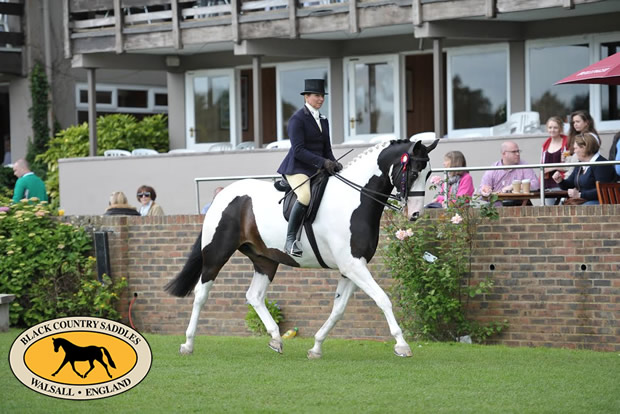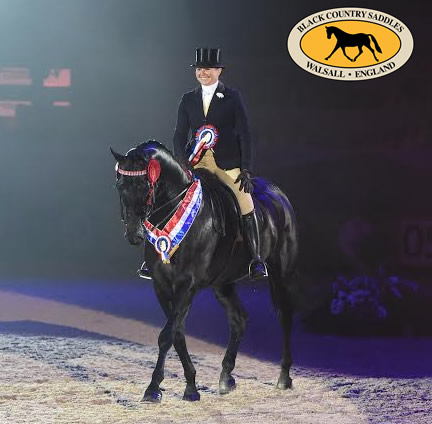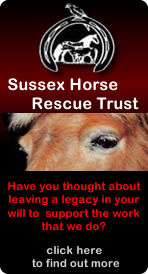
Horseytalk.net Special Interview
Jo Bates
The rider and producer of Elusive the 2016 Hack of the Year at HOYS, Jo Bates has a wealth of experience in the world of showing. Here we talk to the Black Country Saddles rider about ringcraft and what the judge is looking for.
Top Tips on Ringcraft for Winter Shows

Says Jo Bates
Ringcraft is the art of presenting and showing off your horse in the arena to allow the best possible chance of impressing the judge.
Showing is about making an instant impact and creating the best picture possible for the judge. As well as emphasising all the horse's good points it is important to try and improve or hide the horse's bad points.
The outcome of the class depends entirely on the judges' opinions which are based on a sound knowledge of the requirements for each showing class.
Different judges place differing emphasis on criteria such as breed, manners, correctness of conformation and way of going.
A horse with good, well-balanced conformation will not only please the eye but should also be able to perform well, be more comfortable to ride and consequently remain sound.
Quality, class and overall refinement are essentials that a good show horse must have, whether it is a hunter or a cob.
It is important to know who will be judging and what they might like. Your horse's success depends on your ability to place him before judges who will appreciate his qualities.
 Riding In the Ring
Riding In the Ring
It is crucial that you present your horse at his best whenever the judge is looking at you. As you enter the ring, try and place yourself where your horse will stand out against the others in the arena.
When you are in the ring make sure you concentrate on what you are doing and keep an eye on the judge to know when they are looking.
The steward will then ask the class to move forward into trot. The trot needs to be well paced with an even flowing rhythm covering the ground. It is important that as you move up a pace that you keep plenty of space around you so the judge can see you at all times.
When moving into canter you might find it easier to use a corner to help get on the correct lead. This said your horse should be well enough schooled to canter on the straight side as well. The increase of pace should be smooth, flowing and balanced with the horse showing self-carriage.
The steward will then ask the class to change the rein and perform the same in the other direction. The steward will usually tell you to change the rein at the next corner and go across on a diagonal. Judges can often use this to look at how straight your horse moves along the line.
The gallop is used to show that your horse can extend and lower his stride without rushing. The rider should prepare the horse for the gallop, accelerating smoothly out of the corner. It never looks great to put in a quick, short dash – the gallop should be a gallop down the long side from start to finish.
After the initial 'go round' the judge will be looking how to position everyone in the first line up, so don't get boxed in make sure you are seen.
Depending on the class after this preliminary line up you will be expected to perform an individual show or the judge will ride your horse.
Jo's favourite saddle
Jo rides all her horses in the Classic Show Saddle from Black Country Saddles.
Says Jo: "Without doubt the secret of a good saddle for showing is that when you sit on it for the first time it should be fabulously comfortable and after that you should never think about it again.
"A saddle should mould around the horse and provide a very close contact that allows you to sit into the horse and really feel their movement and what is going on underneath you."
Good luck with your winter shows!
For further information please visit www.blackcountrysaddles.com



